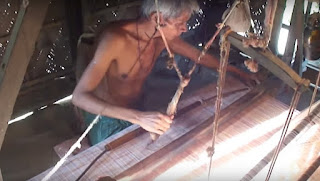Dhaka-Sylhet
highway will be upgraded into four lanes. Up gradation work will begin in next January
2020. The Asian Development Bank (ADB) has signed an agreement with the Economic
Relations Department (ERD) of the government in this regard. Land acquisition
and survey work is now ongoing.
By signing
this agreement, last few years uncertainty has been removed for upgrading the
highway to four lanes. The information gathered from the Road Transport and
Highways Department of the Ministry of Road Transport and Bridge.
According
to information, ADB has recently signed an agreement with ERD to upgrade the 226
km long Dhaka-Sylhet highway into four lanes. Under the agreement, ADB will start
visible work on the development of the highway in the year 2020. ADB was the
first to conduct four lanes expanding work in 2013-14. Later they could not
move much further due to some complexity of who would start the up gradation work
on the highway.
Now they
have been contracted to do the work again. Therefore their previous survey
needs to be re-evaluated. So ADB is doing a new survey. Meanwhile, the Roads
and Highways Department has started the acquisition for this four-lane up-gradation
project. Already, the government has allocated Tk. 3885 Crore for land
acquisition and road side utility works. Of this, the allocation in the current
fiscal year is Tk. 851 crore.
According
to the information, the government was discussing with the ADB to start
upgrading the Dhaka-Sylhet highway to four lanes. But in October 2017, the
government signed a G2G-based agreement with China Harbor Engineering Company for
this work. The project work would start at the beginning of 2018 but the cost
proposed by China Harbor Engineering for the project was about 42 percent
higher than the estimates of the Department of Roads and Highways (RHD). Later
the Ministry of Road Transport and Bridges did not accept their proposal.
There was
a series of discussions between the two sides. But no solution were found, the
work is suspended. At one point, the government decided to complete the project
with own financing. DPP was sent to the Planning Commission, but it was sent
back for further amendments. The road department adjusts it and sends the
revised DPP to the Planning Commission.
Then the Planning
Minister mentioned the project as too expensive and ordered to find if there’s
any outside funding for it. Soon the project was halted. However, it was said
that the project would start before the last national election with the
government's own financing. In the end, the government came out of this
decision.
The
Dhaka-Chittagong and Dhaka-Mymensingh highways have already been upgraded into
four lanes. Up gradation of the Dhaka-Tangail highway is almost completed. Now
the ADB will fund the up-gradation of Dhaka-Sylhet four lane projects. The
project was undertaken in order to expand the previously two-lane highway into
four lanes.
Thanks,
Related:


































